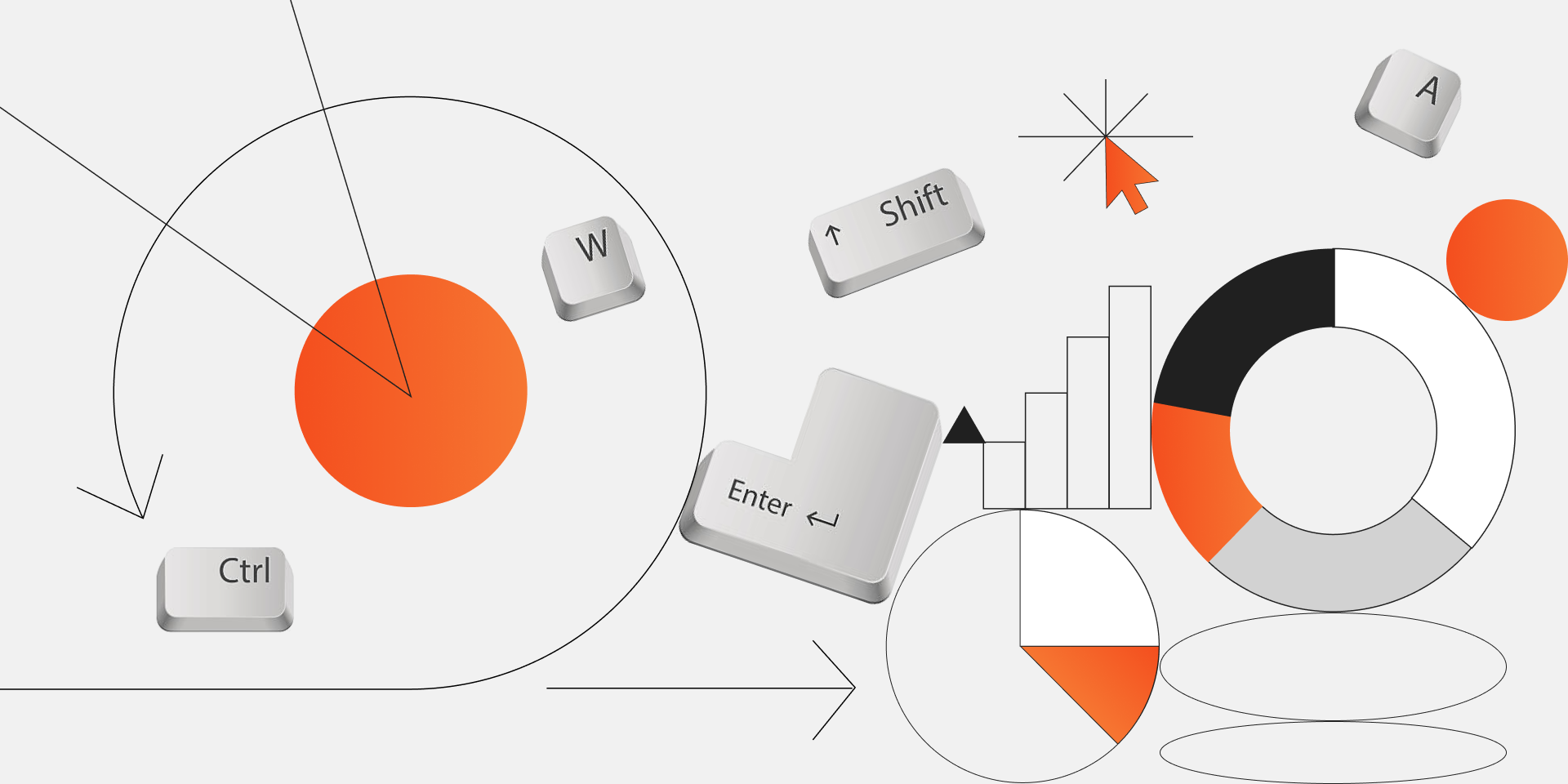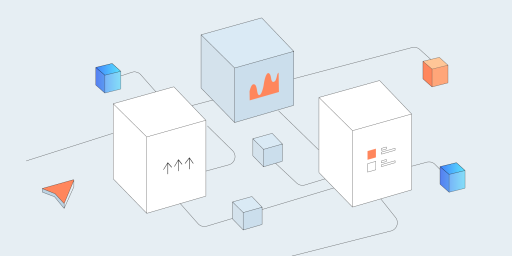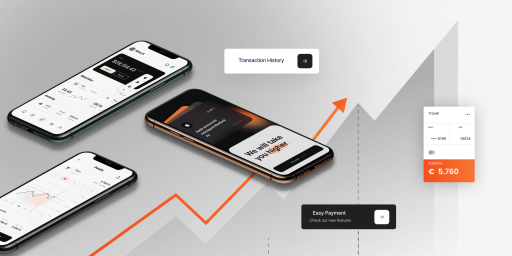In today’s fast-paced software world, quick product delivery is often not an option but a necessity. Building software requires a high level of flexibility in responding to the constantly changing market trends and customer demands. The problem is that with traditional project management approaches, any unplanned change inevitably leads to higher costs and delays on the project.
Agile methods, in turn, allow us to avoid such pitfalls not only in software development but also in software testing. Let us help you learn about the Agile testing process, its main advantages, and why businesses today choose agile practices over traditional approaches.
Key Takeaways
- Agile is a software testing methodology that is based on effective collaboration between team members and departments, and is aimed at delivering the right product for the customers. It’s an iterative approach where requirements are created through continuous cooperation between cross-functional teams.
- Agile testing is done together with development, which leads to testing becoming a proactive preventative measure rather than a way to correct defects after the fact.
- Effective agile testing is performed in sprints that usually last one or two weeks. At the end of each sprint, the software product should be extensively tested and made available to the public. The agile testing cycle consists of four stages: planning, execution, tracking, and closure.
- Agile methodology brings many valuable benefits to the development process, including higher quality products, increased flexibility, faster user feedback, enhanced collaboration, sped-up time to market, and higher return on investment.
- At the same time, agile comes with its own set of drawbacks. These include the lack of details for test cases, frequently changing requirements, lack of quality measurement metrics, and increased pressure on testers.
- The foundational principles of agile testing are outlined by Lisa Crispin and Janet Gregory in their book. These principles include providing continuous feedback, communicating actively with the team, using less documentation, and focusing on people first.
- Agile QA testing relies on several subtypes of testing, which include test-driven development, behavior-driven development, acceptance test-driven development, exploratory testing, and session-based testing.
- Agile testing can be broken down into a few smaller methodologies: Scrum, Kanban, eXtreme Programming, and Lean.
- The most popular tools for implementing Agile testing include Jira, Selenium, Appium, JMeter, Postman, Zephyr, and Miro.
- Agile is still an actively developing software testing methodology. Some of the most prominent trends that will shape the field in 2025 include increased adoption of AI tools, the continued rise of unit testing, Kanban somewhat outshining Scrum in popularity, and companies creating Testing Centers of Excellence for deeper, continuous testing.
What Is Agile Testing?
Agile in software development is an approach that focuses on the people performing their work and their cooperation aimed at delivering the right product to the customer. It is an iterative development process that creates requirements through constant collaboration between the client and cross-functional self-organizing teams.
Agile testing is a practice that follows the rules of agile development and helps create solutions tailored to customer needs. What differentiates this approach is that it breaks the sequence of testing and is carried out continuously, allowing for changes to be released into production automatically.
The Importance of Agile Testing Methodology
Agile practices have become widely used in recent years, with its adoption rates jumping from 37% to 86% in just one year. As of now, 65% of organizations have already implemented agile for 3-5 years, while 94% of companies implement it in one form or another and notice a remarkable growth in their profits. These numbers speak volumes of the impact of agile on software development and signal about its growing adoption in the years to come.
Why is it so popular? First and foremost, agile is about continuous improvement. It doesn’t follow a strict sequence of steps, providing plenty of room for adjustments. Thanks to this, most common pitfalls associated with software development can be avoided, and the end product can be released fast to market and bug-free.
In terms of testing, an agile approach helps save a lot of time and development costs. Unlike waterfall testing, it’s carried out throughout the project, which allows teams to quickly detect errors and fix them early in the project before they escalate into a serious problem or even jeopardize the entire project. As a result, the cost of digital product development can be considerably reduced while increasing the level of customer satisfaction.
More importantly, agile software testing allows for the development of a high-quality product. In companies practicing agile practices, teams closely work together, allowing them to receive quick feedback and pivot their efforts in the right direction.
Let us stand on guard of your software quality
What Do We Understand by Agile Testing Process?
First, the Agile QA process is not a separate activity, but an essential part of the development process and is considered to be a preventative measure. This means that testing is performed much more frequently and in sprints.
At the end of each sprint, which usually lasts one to two weeks, fully tested software should be available and then delivered to the customer. All issues discovered during tests are recorded and evaluated in retrospect, further improving the quality and test coverage achieved.
It is essential for all relevant tests (we’ll cover them later) to be planned in advance and implemented at all levels. This helps detect and fix problems in a timely manner. To speed up testing, automated testing is used, allowing tests to be run multiple times a day and reducing feedback loops.
Furthermore, agile environments should use automated regression tests. This type of testing ensures that the introduction of new features doesn’t lead to new bugs and mistakes and the previous functionality works as intended.
To get a better understanding of the agile testing process, it’s important to understand how the agile testing life cycle goes, which quadrants of agile testing it includes, and the principles behind it. Let’s cover each in detail.
Agile Testing Life Cycle
For the most part, the cycle of agile methodology in software testing follows the same stages as agile development, although there can be variations depending on the team’s goals and standards. In essence, the agile testing life cycle consists of four phases, such as:
- Planning – the stage when the team gets together to discuss the scope of features that need to be implemented and choose metrics that will be used to track the progress of testing. If the product is being refined, it’s the time when they assess the potential impact of changes on the product’s functionality and decide whether to proceed with these changes or not.
- Execution – this is the second phase of agile testing where QA departments conduct tests.
- Tracking – teams track the progress of testing by arranging daily stand-ups, drawing reports, and meeting with stakeholders to discuss what went well and what could be improved in the next iteration.
- Closure – the fourth phase is a phase of closure when the QA team reviews the results of their inputs and removes any bugs that have been detected during testing.
In an agile setting, this cycle can be repeated multiple times in parallel with development to ensure you achieve highly accurate results and faster product delivery.
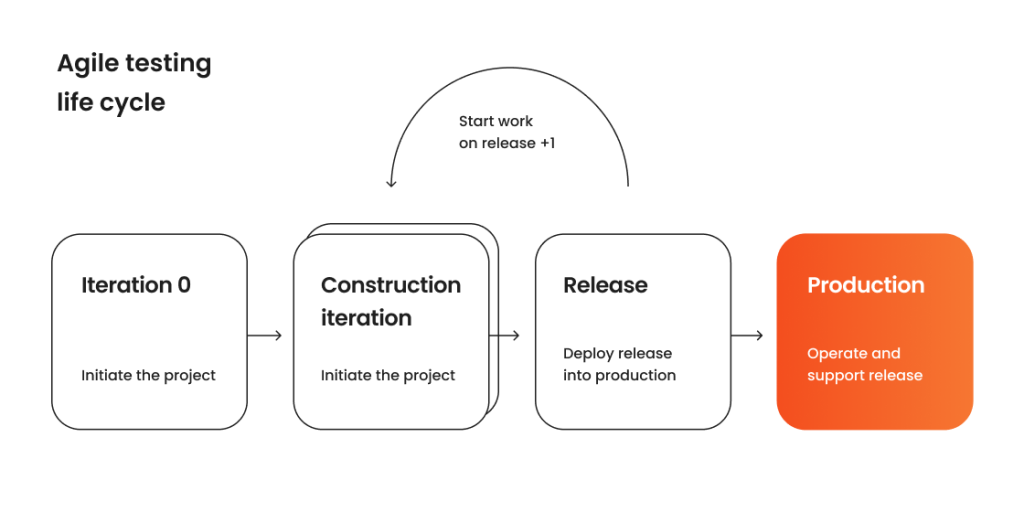
Agile Testing Quadrants
The Agile Testing Quadrants is another definition used to describe the “Matrick Test Matrix”, developed by Brian Matrick in 2003. Accused of not doing enough to cement agile QA testing as a distinct discipline, he developed a grid that featured different types of testing and suggested specific positions for each on the grid. A few years later, Lisa Crispin and Janet Gregory, two agile practitioners who also described agile testing principles, expanded on this grid.
Here’s how an evolution of the Matrick Test Matrix looks like today:
- Quadrant 1. Also known as technology-facing, this quadrant is focused on tests tailored at validating the code and providing support to the team from the technical perspective. Tests include unit tests, component tests, API tests, and web services testing, all of which are tailored at refining the product. Speaking of testing practices, this quadrant is mainly associated with continuous integration and automated testing.
- Quadrant 2. The second sector focuses on business-facing tests, such as functional testing, prototypes, simulations, and story tests that ensure the product meets business goals and requirements. As a rule, it embraces both manual testing and automation test practices.
- Quadrant 3. Another business sector, quadrant 3 embraces tests that help assess the product and find drawbacks in it. These include usability testing, exploratory testing, alpha/beta testing and acceptance testing. The testing approach used in Q3 is manual.
- Quadrant 4. The fourth quadrant embraces technology-facing tests aimed at evaluating the product. More often than not, tests are automated and include load, stress, performance, scalability, maintainability, compatibility and interoperability, recovery, and security testing that ensure the product not only functions as intended but also meets non-functional requirements.
Obviously, these quadrants aren’t rigid compartments. They simply serve as a guide, helping development and testing teams better plan their testing strategies and telling them in what order different tests should be done.
For example, if you’re currently working on an e-commerce web application and want it to have a user-friendly interface, you should look at Q4, which focuses on evaluating the product from a technological angle and ensuring it runs smoothly on various platforms and devices.
On the other hand, if it’s the business logic that you put in priority, the second quadrant will provide more value. By running the tests proposed in this section, you’ll ensure that the business rules are applied correctly and no mistakes are introduced into the live system.
10 Principles of Agile Testing Methodology
There are ten main principles inherent to agile methodologies in testing, described by Lisa Crispin and Janet Gregory in their book Agile Testing: A Practical Guide for Testers and Agile Teams. By following these principles, teams can improve collaboration and increase the productivity of software testing and development.
Let’s briefly cover them.
- Provide continuous feedback. One of the main principles of agile methodologies in testing is to ensure close collaboration between team members so they can impart feedback and insights throughout the entire development life cycle.
- Ensure that the product is delivered with the user in mind. The end goal each agile tester should pursue is to deliver a product that meets and exceeds user expectations.
- Communicate actively with the team. Testers are expected to communicate face-to-face with developers and business analysts to ensure they stay on track and don’t make costly mistakes.
- Be courageous. Testers should have courage to speak up if they believe fixes are necessary for the project’s success, even when developers don’t think so.
- Use less documentation. The main strength of agile approach to testing is simplicity. Instead of writing endless instructions that traditional testing is known for, in agile environments, testers are mainly focused on current customers’ demands.
- Ensure continuous improvement. Testers practicing agile should always strive to improve themselves and broaden their skills.
- Be quick to adapt to changing requirements. Testers’ ability to adapt to the changing needs of the market is another important principle, which separates agile from other approaches.
- Have high self-organization skills. While agile teams do not lack team leads and managers, they provide greater autonomy, requiring testers to be highly organized in order to take the lead in their decisions and actions.
- Focus on people. In agile environments, the focus is shifted toward social interaction. It’s vital that team members can talk to each other and share their knowledge, allowing them to achieve high-quality outcomes.
- Enjoy work. Finally, agile is about enjoying what you do. Those who enjoy their work are motivated to deliver excellent results and can build a great-quality product.
All of these elements, including agile testing principles, quadrants, and testing life cycle, set up a basis for an agile environment in which teams join to deliver quality products that release into the market free of bugs, within established deadlines, and aligned with the set goals.
Any methodology, release schedule, or tech stack — we’ve got you covered.
What Are the Benefits of Agile Testing?
Now that we’ve covered the basics that set agile testing methodology testing apart, let’s look at the advantages of agile testing. After all, it’s important to understand how this approach can benefit you to get an idea of whether it’s worth incorporating into your workflow.
Better Quality Product
Agile approaches produce better products than traditional approaches due to increased collaboration within the team, as well as earlier and more intensive testing throughout the development cycle. Agile methodology helps in taking both preventive and corrective measures in a timely manner, thereby significantly improving the quality of the software.
Higher Flexibility
Agile methodology views requirements as a set of priorities that can change throughout the life cycle. Thus, it’s very flexible in nature, ensuring that you get instant feedback and can make
Fast User’s Feedback
With agile methodology testing, you can get feedback directly from end users, allowing you to improve your product before your competitors.
Enhanced Collaboration
Since developers and testers work closely together and communicate directly with each other rather than relying on documentation, they can avoid many mistakes and significantly speed up product deployment. Moreover, it has a positive impact on team productivity as everyone feels equally engaged and willing to take responsibility for their actions and results.
Shorter Work Cycle
Effective use of a test-driven development approach and coherent team communication can significantly reduce the time required between detailed specification and requirements verification.
Faster Time to Market
Iterative models reduce the time between defining test requirements and approving results, allowing you to deliver the right product to market quicker.
Higher Investment Returns
Agile teams, in particular agile testing teams, provide higher ROI than traditional teams due to shorter feedback loops, which reduces the average cost of resolving defects. Aside from that, they help increase profits by getting your product to market faster.
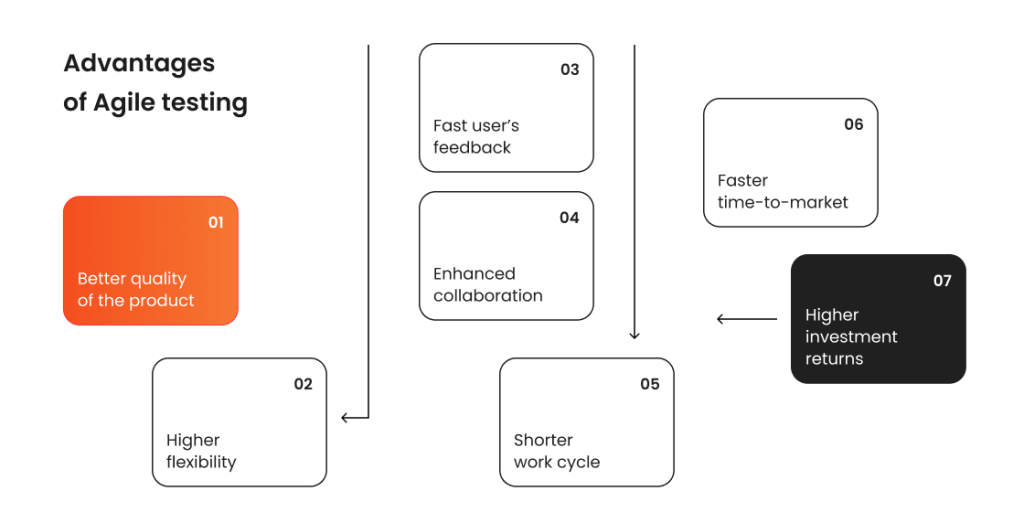
Challenges and Disadvantages of Agile Testing
Although agile software testing offers many advantages, it’s not without its share of drawbacks. Let’s go over some of the most common of them.
- Requirements may often change. If the team decides to make any changes, it may be necessary to discard the testing work that’s already been done, leading to delays in product delivery.
- Lack of details. One common challenge that agile testers encounter quite often is the inability to write extensive test cases. As a rule, this happens when clients know what features they want to implement but don’t quite have an idea of how these features should behave in detail.
- Technical expertise. In agile QA, it’s especially important that testers have strong technical skills that enable them to assist developers in conducting various test checks.
- Greater demands on testers. Agile projects are based on continuous testing, which involves the participation of testers right from the very beginning of the software development cycle. Quite often, testers need to write user stories even before developers start coding, making the whole process quite challenging for the QA team.
- Absence of quality measurement metrics. There are no quantifiable metrics, allowing testers to estimate their testing efforts, making the testing process more challenging.
It’s worth noting that most of these challenges can be mitigated with the right approach. We’ll talk about it later in the section covering the agile testing best practices.
Unlock a new era of software quality with TestFort.
Types of Testing in Agile
By and large, there are four popular types of testing methods used in agile. Further down, we’ll delve into the intricacies of each of them to understand how they work and how they can help you.
Behavior-Driven Development (BDD)
BDD approach is about communication. Testers, key stakeholders, business analysts, and developers get together to discuss the goals of the project and create scenarios for the behavior of features. These scenarios are written in a special format known as the Gherkin Given/When/Then syntax and touch upon the following situations:
- “Given the initial context”
- “When an event takes place”
- “Then deliver results”.
This is how BDD works. Teams start by creating scenarios, and then write tests based on those scenarios. These tests initially fail, after which the team proceeds to build functionality that allows these tests to pass. A great number of tests and software functionality that we know today have been created based on BDD scenarios.
Test-Driven Development (TDD)
Test-Driven Development is a foundational agile testing practice where tests are written before the code itself. Developers begin by creating small, automated test cases based on specific requirements, which initially fail since the corresponding functionality has not been implemented yet. They then write the minimum code needed to pass the test, followed by refactoring to improve code quality while ensuring the tests continue to pass. This iterative process promotes clean, reliable, and testable code.
TDD is widely regarded as a discipline that improves software quality and developer productivity. By focusing on writing tests upfront, it helps clarify requirements, reduce defects, and enable faster debugging. It also serves as a safety net, ensuring that new changes or refactors don’t introduce regressions. TDD’s emphasis on continuous testing and validation aligns closely with Agile principles, fostering collaboration, iterative development, and the delivery of value-driven software.
Acceptance Test-Driven Development (ATDD)
Acceptance Test-Driven Development involves the inputs of three different roles – the customer, developer, and testers. The customer’s focus is directed on the problem, the developer is looking for a solution, while the tester tries to foresee all possible situations where things could go wrong.
Together they draft acceptance tests that determine how features must function from the user’s perspective. Just like in BDD, tests initially fail here, and the functionality of the software is built around the tests until they pass. The main goal of ATDD is to ensure the features of the software function as expected by users.
Acceptance test-driven development is a popular choice for implementing agile methodology in testing because it prioritizes effective cooperation and a shared understanding of requirements. By involving all stakeholders in defining acceptance criteria, ATDD minimizes misunderstandings and ensures the software addresses user needs. Acceptance tests guide development, prevent scope creep, and provide a safety net for changes. This approach not only delivers higher-quality software but also fosters transparency, collaboration, and trust among team members and stakeholders.
Exploratory Testing
Exploratory testing combines two phases together – test design and execution. It’s the kind of testing that doesn’t have scripts. Instead, testers act on the motion, creating various scenarios for possible user behaviors and trying to find ways to break the software. Although the process of exploratory testing doesn’t require documentation, any defects that have been found along the way are recorded in writing as usual.
Exploratory testing is aimed at discovering bugs and issues that often go unnoticed during testing using functional tests, user-centric scenarios, and Test-Driven Development (TDD).
Session-Based Testing
Session-based testing is similar to exploratory testing but unlike it, it has a more orderly structure, ensuring the software is thoroughly tested. Here, testers need to define testing goals and maintain reports that show exactly what they tested, when they did it, and what results were achieved. At the end of each test session, a meeting between a tester and a responsible developer or manager is held. During this meeting, they discuss the following five pillars of testing:
- What was done;
- What outcomes were achieved;
- What obstacles were encountered;
- What areas are still left to be tested;
- How the tester feels about the test results.
Session-based tests are carried out in charters that usually lasts 60 to 120 minutes, are aimed at creating products within a shorter time frame, and are typically automated.
Agile Methodologies
When talking about agile software development methodologies, four types, such as scrum, lean, eXtreme, and Kanban stand out. Each of these methodologies embraces the principles of agile software development, aiming to enhance flexibility, collaboration, and customer satisfaction.
Scrum
Scrum is one of the most widely adopted agile frameworks, which divides the development process into time-boxed iterations (sprints). The main goal of this methodology is to facilitate collaboration within cross-functional teams and accelerate development.
Key Roles:
- Product owner;
- Scrum master;
- Development team.
Scrum Ceremonies:
- Daily stand-ups;
- Sprint planning;
- Sprint review;
- Sprint retrospective.
Crucial Scrum Artifacts:
- Product backlog;
- Sprint backlog;
- Increment.
Lean
Lean principles, derived from lean manufacturing, focus on delivering value with minimal waste. In the context of agile software development, Lean promotes the elimination of non-value-adding testing activities and the optimization of flow. Teams employing Lean principles prioritize customer value, emphasize continuous improvement, and strive to minimize lead time.
Lean Techniques:
- Value stream mapping;
- Kanban;
- Visual management.
eXtreme Programming (XP)
eXtreme Programming is an agile methodology that places a strong emphasis on technical excellence and close collaboration between developers and customers. XP practices include pair programming, TDD, continuous integration, and frequent releases. The goal of XP is to deliver high-quality software in a timely and adaptive manner. It encourages a customer-centric approach, with regular feedback and iterative development cycles to accommodate changing requirements.
Kanban
Kanban is a visual management method for software development that focuses on continuous delivery and workflow optimization. Unlike Scrum, Kanban does not prescribe fixed iterations. Instead, it visualizes tasks on a Kanban board that represents different stages of the development process. This approach allows for greater flexibility and results in a higher rate of return on results. Kanban’s main goal is to reduce the time of product delivery while delivering better quality outcomes.
Kanban Vs Agile
Kanban and Agile are often compared to each other, though Kanban isn’t a separate methodology from Agile, which means it can be used along with it. Let’s look at the key differences between these two project management methodologies to better understand how they stack up against each other and how they can be used to your benefit.
| Agile | Kanban | |
| Approach | The focus is on incremental development, collaboration, and adaptability | The focus is on workflow visualization, optimizing work efficiency, and streamlining the workflow |
| Planning | The project is broken down into 1-2-week sprints | There are no set time frames. Tasks are simply pulled in as a team can take them. |
| Team structure | Agile teams are most often made up of cross-functional specialists that have different tech skills | This model works for all teams, regardless of their structures, roles, and sizes |
| Work management | Teams use backlog to organize and prioritize project requirements. This backlog is then used for each sprint to accomplish tasks with the highest priority | Teams are focused on managing the flow of work. They can see which tasks have the highest priority and ensure these tasks are completed first |
So, you don’t actually need to make a choice between these two approaches if both seem to be beneficial for you. You can use the two together to get the most out of each approach and push the progress of your project forward.
Take your software quality from good to outstanding
Waterfall Testing Vs Agile Testing Methods
While many people think that waterfall project management methodology is going to oblivion, the numbers clearly state that it’s not the case. According to statistics, 51% of companies use waterfall to manage their projects, which is a quite substantial amount. With that in mind, it’s worth taking a look at how agile compares to a traditional waterfall approach to see if going with agile is the right decision for you.
Right off the bat, the Waterfall model isn’t for everyone. It’s mainly used either for simple projects that have rather small budgets or for projects with minimal risk of change. Testing is carried out at the end of the development life cycle when all the other phases have been completely wrapped up and serves as a final confirmation that the product is ready and can go public.
As you can imagine, this rigidity in processes doesn’t work for dynamic projects in which requirements can change pretty often, even midway through sprints. If you choose this model, you won’t be able to make any changes until the end of the product development cycle, inevitably leading to increased development costs and extended time frame.
Considering how speed is important in the modern digital world, the appeal of agile development methodology is more than obvious. Though not without its risks, it allows teams to pivot course of action at any point in time without having to follow a specific sequence of steps.
Other differences between agile and waterfall methodologies are listed below:
- In agile, testing is carried out alongside development, with the QA department and development team closely working together. In waterfall, testing is only done after the completion of development. Also, it’s carried out separately from development.
- The level of involvement of testers in agile and waterfall is completely different. In agile, QA teams are often involved in requirements gathering and analysis, but in waterfall they are not.
- In agile, different testing methods may overlap. In waterfall, this situation isn’t possible.
- The test plan in agile is reviewed after each iteration or sprint, while in waterfall it is reviewed only in the end.
So, you need to start by evaluating your project’s characteristics and how well-defined your requirements are. If there’s the slightest hint they may change in response to the changes of the market, it’s best not to try your chances and go agile.
How Agile Impacts Continuous Integration and Continuous Development
Continuous Integration and Continuous Delivery (CI/CD) are essential practices in modern software development, allowing teams to release high-quality software quickly and efficiently. By automating processes like code integration, testing, and deployment, CI/CD minimizes manual effort, reduces errors, and ensures faster delivery of value to users. These practices align closely with agile principles, creating a streamlined, iterative workflow.
Agile drives Continuous Integration and Continuous Delivery by fostering collaboration, automation, and iterative workflows. Frequent code integration with automated testing ensures early detection of issues, while delivering small, thoroughly tested increments keeps development aligned with user needs. Agile’s adaptability supports rapid feedback and seamless incorporation of changes, enabling teams to improve continuously. Together, agile and CI/CD create an efficient development pipeline that delivers high-quality software quickly and reliably in dynamic environments.
Agile Testing Best Practices
If you’re just considering diving into the world of agile, you may find it helpful to familiarize yourself with agile best practices for testing. They’ll help ensure that what you do has an effect on your workflow and speed up the creation of a great quality product.
Define Your Strategy
First things first, you need to create a testing strategy. That’s where it’s vital to have a clear understanding of what outcomes you want to achieve, how you’re going to track the project progress, and what tools you’ll need to use along the way. This strategy should be straightforward and precise while also going in line with the principles of your organization. Aside from that, it should describe the crucial aspects of project development such as:
- The scope of testing;
- Roles and responsibilities inside a software testing team;
- Types of testing to be used;
- Quality criteria;
- Potential risks and how they can be solved.
Test Often
What distinguishes agile testing strategies from any others is that they involve frequent testing. This is one of the benefits of agile testing and an aspect of the work that can’t be overlooked. What’s more, agile testing allows you to incorporate testing as early in the development as possible.
A case in point is the shift-left testing approach, one of the latest web trends. This practice of testing, as the name suggests, moves testing activities closer to the beginning of the SDLC, ensuring that no serious bugs emerge later in development when a huge chunk of work is done.
Automate
Test automation is a key component of agile testing best practices. Automating repetitive and time-consuming test cases not only speeds up the testing process but also improves its accuracy.
Automated testing is particularly beneficial for regression testing, where previously tested functionalities need to be retested to ensure that new changes haven’t introduced unexpected issues. Besides, it can be integrated into the CI/CD pipeline to provide immediate feedback on the code quality after the completion of each iteration.
Communicate and Collaborate
Frequent communication is one of the key agile principles that determines the success of a project. It’s vital that testers, developers, business analysts, and stakeholders can communicate on a regular basis to ensure they’re all on the same page.
Even if the team doesn’t work in-house, communication can’t be compromised. There are many platforms and tools that you can use to facilitate communication between remote teams, ranging from messengers and chat apps like Zoom and Skype to agile boards and dashboards.
Always Improve
Agile methodology in testing is all about the ability to stay abreast of evolving technologies and the changing needs of software development environments. If you go agile, you should constantly monitor new trends and look for ways to improve processes. Also, it’s important to regularly discuss with your team what’s been done and what lessons have been learned to pivot future testing activities in the right direction.
Focus on Quality
While agile practices are aimed at speeding up the development of software products, quality isn’t something you can compromise. Make sure that you don’t ever skip any important steps and choose testing levels that best align with the project needs. That’s where the above mentioned concept of agile testing quadrants comes into play. By sticking to the testing quadrants, you’ll never miss any of the important aspects of testing and will be able to produce great quality results.
Our QA Expertise in Action. Manual and automated testing for a leading QA tool.
Best Agile Testing Tools
While testers are, without a doubt, the unsung heroes of any software development team, they don’t do all the work alone. There are many tools that assist QA departments, allowing them to catch and fix bugs before they escalate. Further down, we’ll cover the best tools worth incorporating into agile environments.
Jira
Jira is one of the most popular project management tools widely used around the world. The popularity of Jira can be easily understood. Developed by Atlassian, this software supports integrations with third-party plugins, enabling automation of tasks, and can be used with any of the project management methodologies used in Agile. Moreover, it has a comprehensive reporting feature that helps create detailed reports, making it easier for the whole team to track the project progress at any of its phases.
In our projects, we use Jira a lot. This tool not only helps keep track of the flow of tasks and ensure we’re not behind schedule, but it also serves as a bug tracking solution, highlighting the priority of issues that need to be fixed.
Selenium
This is, perhaps, the most widely used automation tool in testing web applications. It can be used across all platforms, be it Windows, Mac, or Linux, and the majority of browsers, including Chrome, Firefox, Safari, IE, and Edge. The main strength of Selenium is that it’s open source. This means that it has a wide community support that can help with any questions should you encounter any issues while using it, and it is free to use. Plus, it offers support for CI/CD tools, making it ideal for agile practices.
For example, with the help of Selenium, our testing team automated over 1,200 test cases while testing a free audio streaming radio service, which helped us increase testing coverage and minimize wastage of resources.
Appium
Appium is another popular agile testing tool. Just like Selenium, it’s an open source and cross-platform, meaning it can be freely used on all platforms and devices. However, the best thing about it is that it can be integrated with real devices and simulators, allowing for the testing of mobile and hybrid applications. A focus on mobile development and an extensive support of programming languages like Java, Python, and Ruby, set Appium aside from many other testing tools.
JMeter
JMeter, developed by the Apache Software Foundation, is a widely used open-source tool for performance testing and load testing. While it’s not specifically designed for agile testing, its capabilities make it ideally suited for agile environments, especially when it comes to testing performance issues like speed, responsiveness, stability, etc, and API testing.
JMeter allows testers to simulate multiple users and analyze the performance of web applications under various conditions. More importantly, it helps address performance bottlenecks early in the process, preventing them from becoming a more serious problem down the road.
Postman
The tool that is most often used for API testing is Postman. It can be used for free – and in most cases, its functionality is sufficient to perform most of the tasks – and as a paid version. Besides testing, it can also be used for the automation of APIs – the capability not many companies are aware of. The tool supports an intuitive test script editor where testers can write new tests and integrate them further into the pipeline.
Zephyr
Zephyr is a test management solution designed for agile teams, providing a wealth of features for test planning, execution, and reporting. Furthermore, it seamlessly integrates with Jira, making it a popular choice among teams using Jira as their project management tool. Using Zephyr, testers can create test cycles, execute tests, and generate reports directly within Jira, which helps streamline the testing process and enhances collaboration on the team.
While working on Dashlane – a password manager and a digital wallet all-in-one, we used Zephyr, along with HockeyApp, TestFlight, and SharedBox, to streamline testing.
Miro
Miro is another collaboration tool that’s ideally suited for agile development and testing. It connects with over 130 apps, providing you with a single digital workspace where all the team can work together. It syncs with Jira and offers Kanban workflow visualization for easy task tracking. Besides, it includes an AI-enabled Miro assistant, providing you with a reliable partner for innovation.
An Agile Tester Persona
Before wrapping up, let’s also say a few words about the personal traits that make up a perfect agile tester profile. These aren’t strict rules – you can find many talented testers with or without these traits, but they can serve as a compass, helping you assemble an agile testing team.
- A team player – since agile testers are supposed to work closely with the team, they need to be flexible, ready to adapt to changes, and work well within deadlines.
- Strong technical background – agile testers work along with developers, often writing test cases even before the coding begins. They also need to be proficient in automated testing, making strong technical skills a priority for them.
- Communication skills – testers need to be able to hear and understand the requirements of the project. At the same time, they also need to have good communications skills to express themselves and defend their point of view when necessary.
- Analytical mindset – an agile tester should have strong analytical skills to recognize potential issues, understand complex systems, and develop effective testing strategies. These skills can be game-changing in ensuring comprehensive test coverage.
- Attention to detail – a keen eye for detail is indispensable for a tester. Detecting even the smallest deviations from the original test plan can prevent potential issues from escalating and save you from wasting resources.
- Customer focus – a tester, especially one working in agile, needs to understand the end user’s perspective. He or she should be able to empathize with the user’s needs, anticipate potential usability issues, and advocate for a product that not only meets technical requirements but also provides a positive user experience.
- Continuous learner – an agile tester should never stop learning because the field of software testing always evolves. It’s important to stay updated on industry trends, best testing practices, and technological advancements to implement the most effective strategies that will keep moving the project forward.
While these traits are important for a tester, it’s essential to recognize that diversity within the testing team can bring the most value. Strive for a blend of technical expertise, communication skills, and varied experience to build a super effective team that actively contributes to the creation of reliable and robust software products.
Trends in Agile Adoption
As we move into 2025, where being quick and adaptable is super important in order to stay competitive, we can expect the agile approach to become even more ubiquitous. Companies understand the importance of being flexible and will increasingly implement agile practices into their work processes. However, there certainly will be a slight change in how this approach will work. Let’s go over the major trends that have taken off in 2024 and will continue in 2025 and beyond.
AI Tools Are Making a Splash
We don’t need to tell you how big ChatGPT is. Its emergence has revolutionized the way things are done now, lifting the burden off the shoulders of development and testing teams. Now it is enough to give it instructions, and it can write test scripts for various tools based on the best testing practices, significantly expediting the time and effort needed for the completion of projects.
Many companies already actively use ChatGPT for automation. The tool does an excellent job of creating test plans if it has enough input data. Moreover, it can generate test scripts in various programming languages, saving you lots of time. For example, if you give it a script in Python and then request it to provide an answer in JavaScript, ChatGPT will do exactly that.
Another great use of ChatGPT is formatting input data. Rather than spend hours manually formatting data to get it ready for test scripts or project management tools, testers can ask ChatGPT to do this job for them.
Unit Testing Is Becoming Ever So Popular
Unit testing fits the flexible nature of agile methodology like no other. No wonder it’s becoming increasingly popular and will continue to be so in the years ahead. By regularly carrying out unit testing, many of the errors can be detected and fixed before they get into the more advanced stages of development, thus saving you both money and time.
Here are the key reasons why implementing unit testing is a smart move:
- It helps verify the suitability and functionality of the code in various scenarios.
- It enhances the code’s readability, ensuring that developers can easily understand it and make changes to it faster when necessary.
- Unit testing, when effectively executed, can also serve as project documentation.
- Since unit testing is carried out literally in milliseconds, it allows for the performance of numerous tests within a very short timeframe.
So, even though setting up unit tests at the beginning might seem like a lot of work on the developer end, the effort is well worth it and will pay off in significant time savings later on.
Kanban Is Coming to the Fore
While Scrum doesn’t lose its popularity, many of the companies find it somewhat restrictive and opt for Kanban instead. The beauty of the Kanban flow is that it doesn’t tie the team to the specific time intervals, enabling them to work at a faster pace when they can and boost their productivity. It’s been noted by Businessmap that the overall boost in productivity after implementing Kanban increased up to 300%, which is quite phenomenal.
Test Automation Is Taking Over
This trend isn’t new, but as more companies realize the significance of test automation, we’re likely to see an even greater surge in its adoption in 2025. Moreover, the cost to implement automation isn’t as steep as it used to be a few years ago, and many of the tools can be used for free.
Continuous Integration Is Going to Be Used More Often
Continuous integration is a great time-saver. By implementing CI, companies can significantly speed up the delivery of code changes and refine the functionality of the product without the pressure of worrying about a release day. According to stats, teams that have turned to CI/CD have seen a 25% increase in lead times. What’s more, they’ve also lowered the rate of failures by half, demonstrating the effectiveness of continuous integration practices.
The Rise of Cloud-Based Testing Environments
Cloud-based testing environments are transforming Agile workflows by providing scalable, flexible, and cost-effective solutions for diverse testing needs. These environments allow teams to quickly set up and tear down test configurations, ensuring rapid iteration and deployment. They support cross-platform and cross-device testing, facilitating collaboration among distributed teams. By moving testing into the cloud, Agile teams can improve testing efficiency, reduce infrastructure costs, and accelerate delivery cycles, ensuring high-quality software in dynamic, fast-paced development environments.
Creation of Testing Center of Excellence
Finally, we’re likely to see a shift to using agile testing services from the Testing Center of Excellence (TCoE). These facilities are created to handle high-scale testing operations by smartly allocating QA resources between teams and governing all aspects of testing within a company. Basically, you can entrust any testing task to the TCoE, from choosing the right testing suite to picking appropriate tools for the project at hand. It works like an extension of your in-house team, keeping a cautious eye on everything that’s happening within the QA realm.
Our company has already set up the Testing Center of Excellence, ensuring our clients have peace of mind their projects are in reliable hands, can optimize their work, and get the most value for their money.
Your vision + our testing expertise = software quality that exceeds expectations
Final Thoughts
Having provided agile testing services for close to two decades, we can say with confidence that Agile methodology is here to stay. Agile testing provides many benefits, from higher flexibility to faster time to market. More importantly, it allows you to achieve great quality products that fully meet customer and business requirements while significantly reducing development costs. Surely, traditional testing approaches are still being used these days, particularly when it comes to basic products that don’t have complex functionality and have a rather limited budget. However, the future is definitely behind agile. If you’re looking to implement agile testing methodology, our guide can be a good start.
Jump to section
Hand over your project to the pros.
Let’s talk about how we can give your project the push it needs to succeed!
